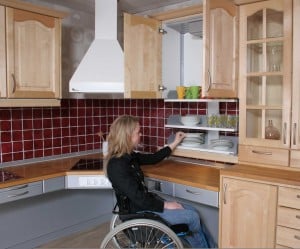Human problems must be solved using correct design changes. The principles of Universal Design solve accessibility issues for the most significant number of people. Special needs children, people who have become seriously injured, people living with a debilitating disease, people with sensory limitations or intellectual limitations, and last but not least, the people who are planning to stay in their homes for as long as possible while Aging in Place all benefit from accessible homes. The need to provide for disabilities during elder construction or home modifications for special needs children empowers us to create environments wherein people can function effectively. As our society evolves away from institutionalized care, editing and making a home more comfortable and aesthetically pleasing for children, older adults, and their visitors benefits the comfort and lifestyle of the entire family. By the way, how are you planning for your future when it concerns editing your existing home which may no longer fit your family's evolving needs?
Let's start by defining what is meant by a home edit intended to accentuate an accessible home. First of all, it's main purpose is to increase organizational skills and to reduce clutter which promotes home safety and lifestyle trends. It produces a home that is more visually appealing, efficient, and functional. Going further, the identification and removal of a home's architectural barriers using Universal Design home modifications completes the need for safety and independence promoting a healthy living environment. Forward-thinking homeowners, in turn, experience a better quality of life from the benefits of a home edit. Finally the accessible home stands as the defined course for a Universal Designed home. In these edited accessible homes, performing as a Universal Design contractor, T-Square Company in Austin, Texas identifies a home's architectural barriers and removes them during a design/build remodel to increase safety and independence. Accessible homes of Austin, or anywhere else for that matter, provide homeowners with a means to stay healthy, independent, and safe. People exhibiting any form of disability can live comfortably as well as fully functional individuals.
Tweet and understand this fact of life! Accessible homes will be needed by everyone at some uncertain time within their life. This edit or change can be prompted for ourselves, a family member, or a visitor. This action defines the Aging in Place concept and its associated CAPS accreditation, a nationally registered credential offered through the NAHB. Its function is to keep people in their homes longer and provide safety and independence to all homeowners. What is more, Universal Design segues seamlessly into Aging in Place.


Because everyone ages differently and has different needs and wants over time, a universal solution providing a design for all is needed. The factors that constitute the Aging in Place market for individuals is based on their genetic makeup and lifestyle, including their choices chosen while living and their living environment. These factors have brought about the need for Universal Design. This process is the design of products, services, and environments usable by as many people as possible regardless of age, ability, or situation avoiding future adaptation or specialized alterations. It provides the most significant safety and access for home guests or occupants and is undetectable when done well. Since so few homes share the accessibility offered by Universal Design, to satisfy the needs of a particular household member brought about by an accident, an illness, or simply the aging process, there will always be a need for customized and prudent accessibility features. A seasoned CAPS-accredited remodeling professional has the ability to accomplish this desire by producing a truly safe and functional design. This same competent design/build home remodeling company that understands and practices Aging in Place home modifications should accomplish the work according to the principles of Universal Design ensuring your family's safety and accessibility. Certified Aging in Place specialists are listed in Washington on the NAHB CAPS website.
The concept of the accessible home has evolved beyond the basic grab bars and ramps to one in which accessibility is built into the basic design. Universal Design makes living in a home easier for people of all ages and abilities. Accessible design is beautiful and functional and never needs to have any institutional appearance. As our aging baby boomer population ages, the need for accessibility in the home is becoming ever more critical. Our new way of viewing the basic home in our society coupled with our antiquated architecture is giving way to a revolution in home design. Ordinary homeowners with extraordinary challenges can partner up with CAPS design professionals, architects, and their own families to create homes to restore capabilities, independence, and grace to daily living.












